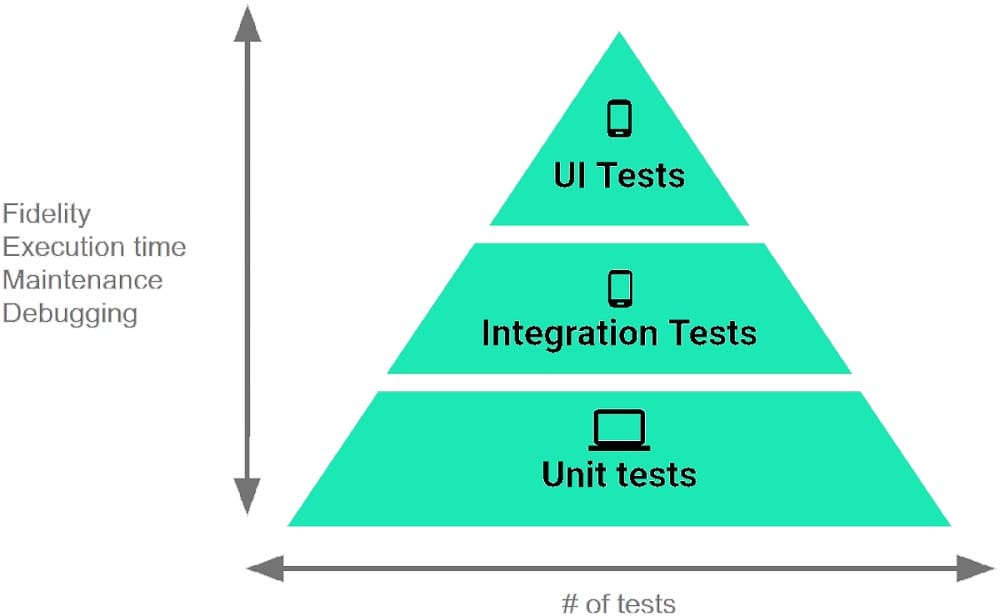Exam Details
Exam Code
:ASSOCIATE-ANDROID-DEVELOPERExam Name
:Associate Android Developer (Kotlin and Java)Certification
:Google CertificationsVendor
:GoogleTotal Questions
:128 Q&AsLast Updated
:Aug 20, 2025
Google Google Certifications ASSOCIATE-ANDROID-DEVELOPER Questions & Answers
-
Question 91:
When your code execution reaches the breakpoint, Android Studio pauses execution of your app. You can then use the tools in the Debugger tab to identify the state of the app. With Step Over

you can
A. examine the object tree for a variable; expand it in the Variables view.
B. evaluate an expression at the current execution point
C. advance to the next line in the code (without entering a method)
D. advance to the first line inside a method call
E. advance to the next line outside the current method
F. continue running the app normally
-
Question 92:
When your code execution reaches the breakpoint, Android Studio pauses execution of your app. You can then use the tools in the Debugger tab to identify the state of the app. With Step Into

you can
A. examine the object tree for a variable, expand it in the Variables view. If the Variables view is not visible
B. evaluate an expression at the current execution point
C. advance to the next line in the code (without entering a method)
D. advance to the first line inside a method call
E. advance to the next line outside the current method
F. continue running the app normally
-
Question 93:
When your code execution reaches the breakpoint, Android Studio pauses execution of your app. You can then use the tools in the Debugger tab to identify the state of the app. With Evaluate Expression

you can
A. examine the object tree for a variable; expand it in the Variables view
B. evaluate an expression at the current execution point
C. advance to the next line in the code (without entering a method)
D. advance to the first line inside a method call
E. advance to the next line outside the current method
F. continue running the app normally
-
Question 94:

What is illustrated in the picture?
A. Logcat window with filter settings
B. Debugging native code using LLDB
C. The Variables and Watches panes in the Debugger window
D. The Breakpoints window lists all the current breakpoints and includes behavior settings for each
E. Adding a watchpoint to a variable in memory
-
Question 95:

What is illustrated in the picture?
A. Logcat window with filter settings
B. Debugging native code using LLDB
C. The Variables and Watches panes in the Debugger window
D. The Breakpoints window lists all the current breakpoints and includes behavior settings for each
E. Adding a watchpoint to a variable in memory
-
Question 96:

The Testing Pyramid, shown in the Figure, illustrates how your app should include the three categories of tests: small, medium, and large. Small tests are unit tests that :
A. validate your app's behavior one class at a time.
B. validate either interactions between levels of the stack within a module, or interactions between related modules.
C. validate user journeys spanning multiple modules of your app.
-
Question 97:

The Testing Pyramid, shown in the Figure, illustrates how your app should include the three categories of tests: small, medium, and large. Medium tests are integration tests that:
A. validate your app's behavior one class at a time.
B. validate either interactions between levels of the stack within a module, or interactions between related modules.
C. validate user journeys spanning multiple modules of your app.
-
Question 98:
Each time your test invokes onView(), Espresso waits to perform the corresponding UI action or assertion until the following synchronization conditions are met: (Choose three.)
A. The message queue is empty.
B. The message queue is not empty.
C. There are some instances of AsyncTask currently executing a task.
D. There are no instances of AsyncTask currently executing a task.
E. Some developer-defined idling resources are not idle.
F. All developer-defined idling res
-
Question 99:
To run your local unit tests, follow these steps:

A. Option A
B. Option B
C. Option C
D. Option D
-
Question 100:
To create a basic JUnit 4 test class, create a class that contains one or more test methods. A test method begins with the specific annotation and contains the code to exercise and verify a single functionality in the component that you want to test. What is the annotation?
A. @RunWith
B. @LargeTest
C. @Rule
D. @Test
Related Exams:
ADWORDS-DISPLAY
Google AdWords: Display AdvertisingADWORDS-FUNDAMENTALS
Google AdWords: FundamentalsADWORDS-MOBILE
Google AdWords: Mobile AdvertisingADWORDS-REPORTING
Google AdWords: ReportingADWORDS-SEARCH
Google AdWords: Search AdvertisingADWORDS-SHOPPING
Google AdWords: Shopping AdvertisingADWORDS-VIDEO
Google AdWords: Video AdvertisingAPIGEE-API-ENGINEER
Apigee Certified API EngineerASSOCIATE-ANDROID-DEVELOPER
Associate Android Developer (Kotlin and Java)ASSOCIATE-CLOUD-ENGINEER
Associate Cloud Engineer
Tips on How to Prepare for the Exams
Nowadays, the certification exams become more and more important and required by more and more enterprises when applying for a job. But how to prepare for the exam effectively? How to prepare for the exam in a short time with less efforts? How to get a ideal result and how to find the most reliable resources? Here on Vcedump.com, you will find all the answers. Vcedump.com provide not only Google exam questions, answers and explanations but also complete assistance on your exam preparation and certification application. If you are confused on your ASSOCIATE-ANDROID-DEVELOPER exam preparations and Google certification application, do not hesitate to visit our Vcedump.com to find your solutions here.